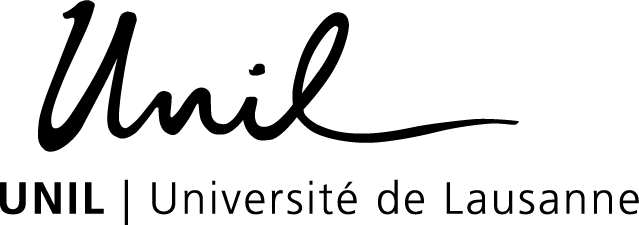The UNIL Doughnut
In order to guide the development and monitoring of its CAP2037 transition strategy, UNIL has chosen to mobilise economist Kate Raworth’s Doughnut conceptual framework (2017). This framework combines planetary boundaries (Rockström et al., 2009) with the social minimums that must be guaranteed for everyone in order to design a safe and fair space for humanity.
In practice, for the environmental ceiling, the aim is to define, on the basis of scientific knowledge, the target values to be achieved to enable the institution to respect the planetary boundaries and, secondly, to quantify the University’s current environmental impacts.
This exercise in adapting the Doughnut to UNIL allows us to establish a diagnosis highlighting the gap between the current situation (in red) and the targets to be reached by 2050 (in green), corresponding to the major international deadlines resulting from the Paris Agreement in particular.
The social floor of UNIL’s Doughnut building has not yet been quantified, but work is in progress (see below).
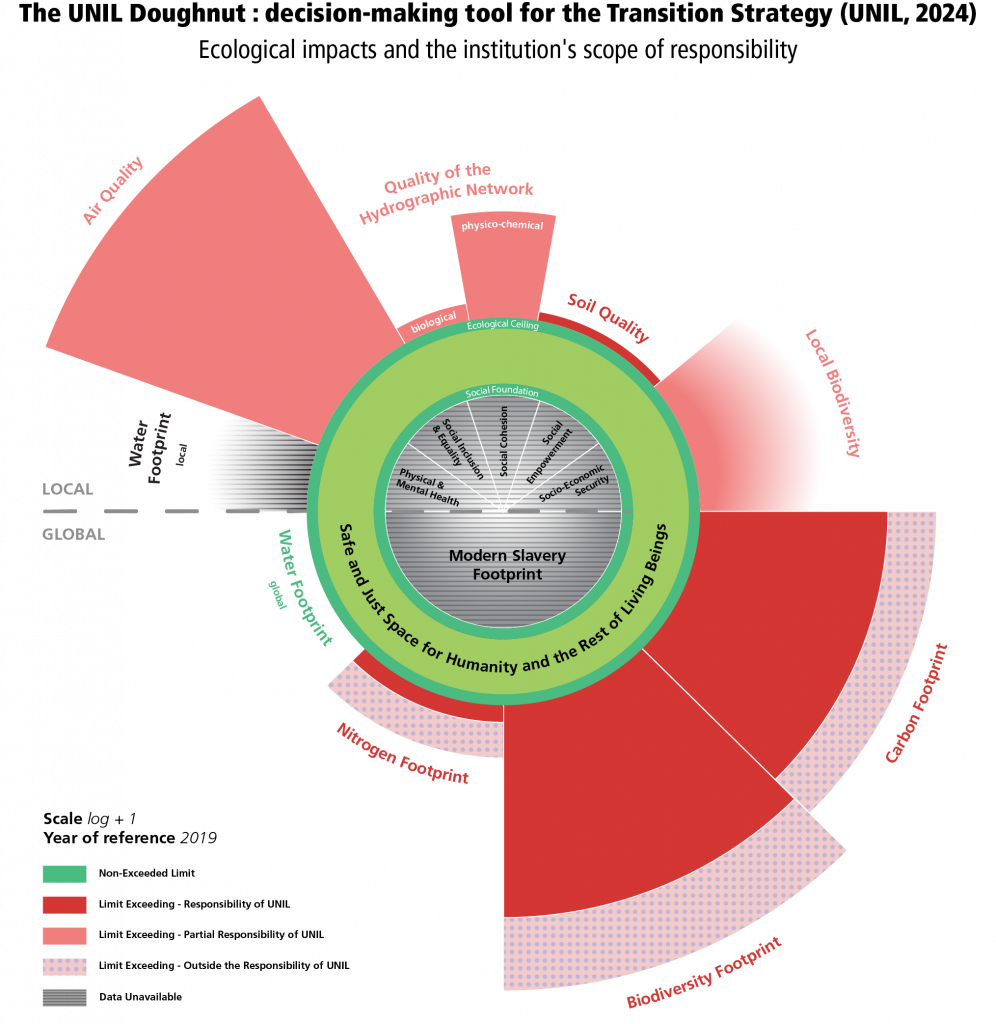
Detailed impacts
For each planetary boundary, a detailed analysis makes it possible to identify UNIL’s main environmental impacts and thus to define the main areas for action. Due to the availability of data, UNIL is essentially documenting its carbon footprint and its footprint on global biodiversity as part of the CAP2037 transition strategy, but the actions undertaken are intended to benefit the other planetary boundaries as well.
In terms of UNIL’s carbon footprint, the main areas of impact are as follows:
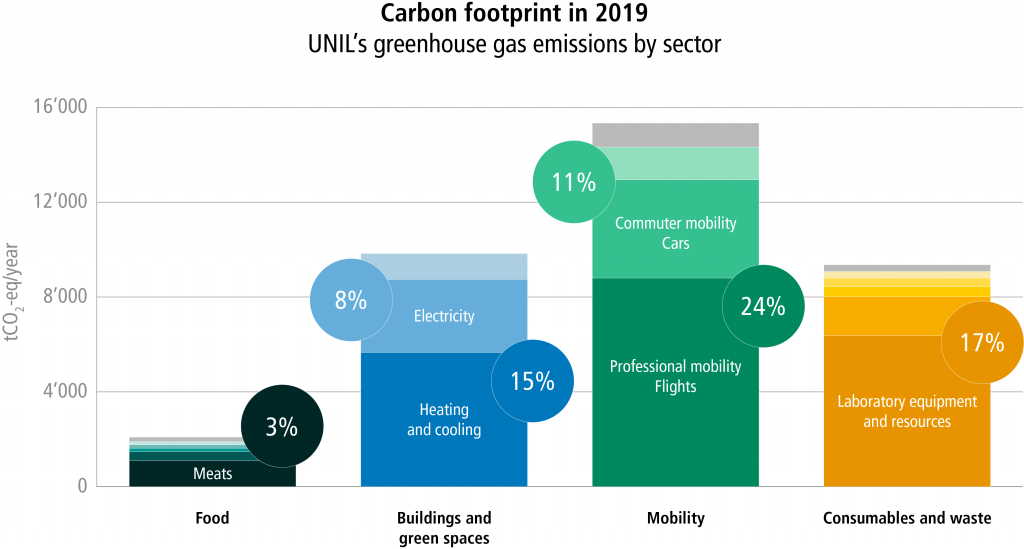
In terms of the impact on UNIL’s overall biodiversity, the main areas of impact are as follows:
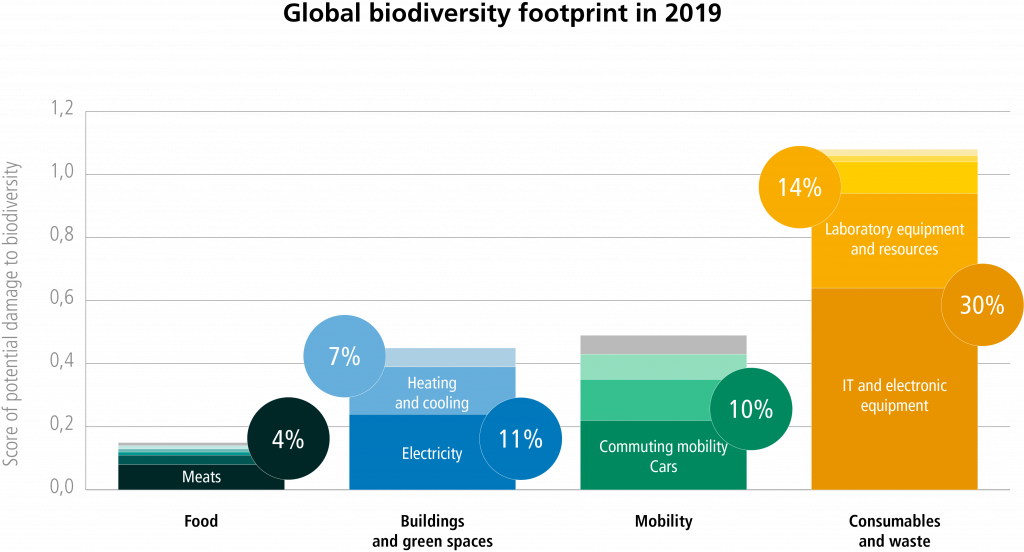
Reduction trend for UNIL’s greenhouse gas emissions
In terms of its carbon footprint, moving from red to green means that UNIL must reduce its greenhouse gas emissions by 95% by 2050. The assumption is that the remaining 5% of emissions in 2050 can be captured by negative emission techniques, enabling UNIL to achieve carbon neutrality.
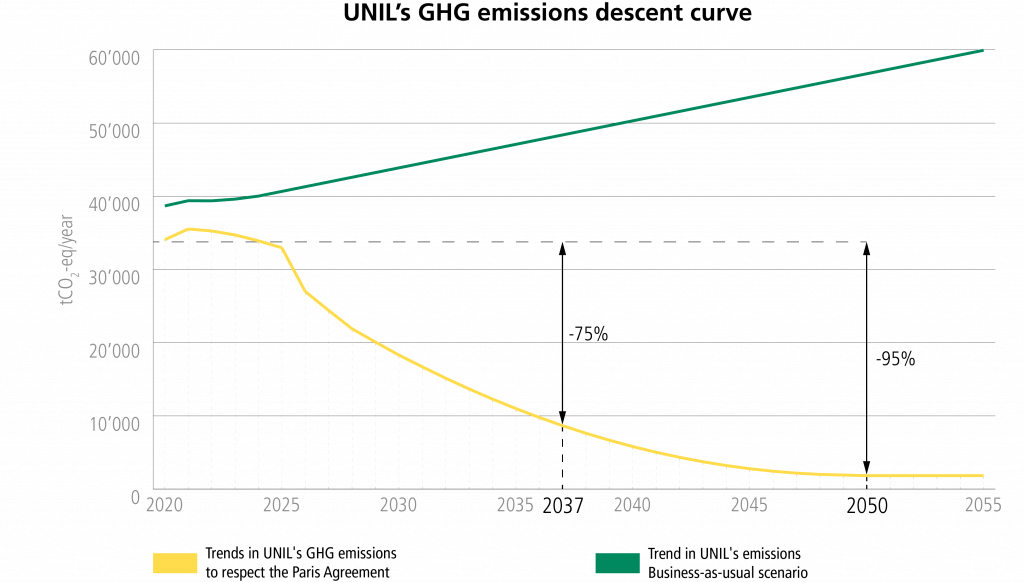
This figure corresponds to UNIL’s contribution to achieving the objectives of the Paris Climate Agreement, i.e. to keep the increase in global temperature by 2100 well below 2°C and to make even greater efforts to limit the increase in temperature to 1.5°C above pre-industrial levels.
More information on the social floor of the UNIL Doughnut
The social floor of the UNIL Doughnut has not yet been quantified because the existing data are not sufficient to define and provide information on the quality of life of the UNIL community. To fill this gap, UNIL is collaborating with the Doughnut Economics Action Lab to define a methodology for quantifying the social minimums that need to be guaranteed for everyone. UNIL is also mobilising the expertise of an interdisciplinary working group made up of researchers, student representatives and UNIL services to quantify this social floor in the coming months.
At this stage, CAP2037 does not contain any specific objectives concerning the social aspects of the Doughnut, but these have been considered in the definition of objectives linked to planetary boundaries, particularly with regard to possible co-benefits or co-damages.
Critical reflection on the Doughnut conceptual framework
UNIL has chosen to mobilize the Doughnut conceptual framework to guide its transition strategy because it offers the following advantages:
- All planetary boundaries are considered, not just the climate.
- Linking environmental and social issues.
- Establishment of thresholds to be reached, enabling targets to be set.
- Existence of a methodology for downscaling to territories or entities.
This conceptual framework also has limitations and gaps that it is important to consider and document. The UNIL’s Competence Centre for Sustainability is actively monitoring publications on the Doughnut, stimulating critical reflection on it within the UNIL research community and working on a publication on the limitations of the Doughnut conceptual framework (forthcoming).
A scientific watch is also underway on planetary boundaries.
